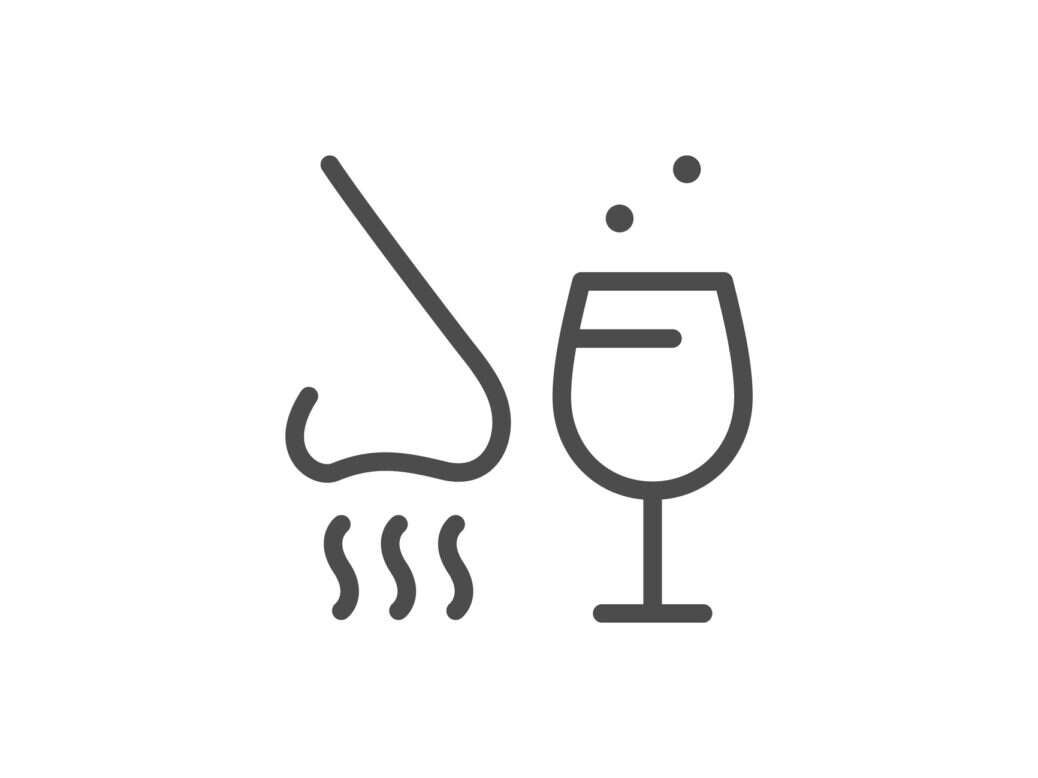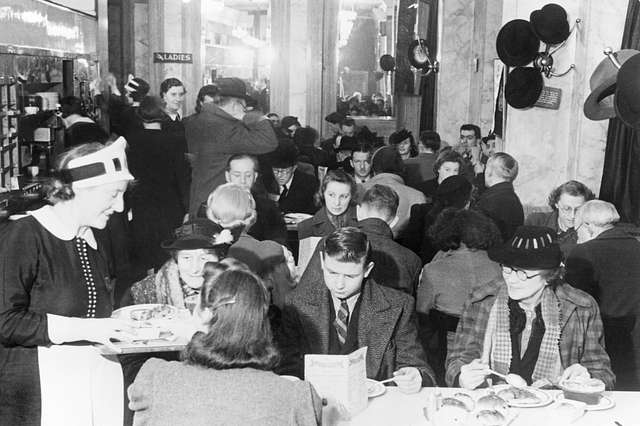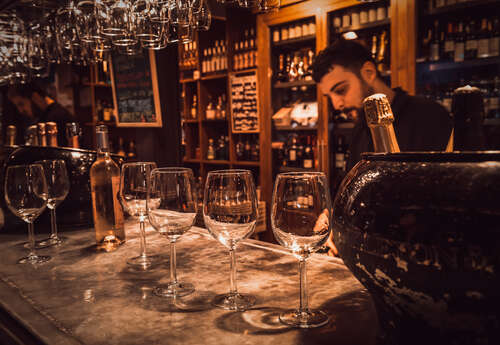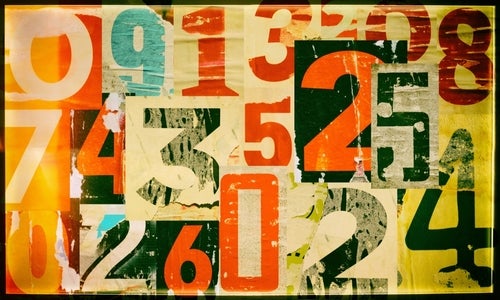
Continuing his series looking at the philosophical implications of widely used terms in the modern wine lexicon, Barry C Smith considers the meaning of aroma.
In the life of a wine the most important attribute by far is its aroma profile. Many wines can be equally acidic, equally sweet, equally alcoholic, and with a bit of clever manipulation we could produce wines that were indistinguishable by the tongue alone. What makes them distinct from one another, often unique, are the heady odor mixtures that make up each wine’s aromas at any given time.
Yet, for the everyday drinker, all the swirling and sniffing can seem like an unnecessary prelude to the main event: Sipping the wine. Those wishing to seem knowledgeable may mimic the process of swirling a wine in the glass before drinking it but they are often unaware of why it is done. (I’ve seen diners swirl the wine and sip without so much as a sniff.) So, what is the elaborate swirling practice for? To answer we need to separate the first and second nose.
Aroma: First and second nose
A sensible strategy is to smell what’s in your glass before agitating it. This is the best test of whether it is a wine of promise or tragically flawed. What you will get at first are the most volatile elements, the aroma compounds powerful enough to escape the alcohol, which in general is a barrier to aroma. This is what the French call the first nose. (This should be enough to tell is a wine is corked—has traces of trichocoanisole— but you may need to agitate to be sure.) Very often the first nose will exhibit fermentation odors but it can also reveal key aromas of a given grape variety. There may be tell-tale signs of lychee and rose petals of a Gewürztraminer, or of rose and tar in a Nebbiolo. In some cases, we know exactly which molecules are responsible for such key aromas: The kerosene note of a Riesling being due to 1,1,6 trimethyl-1,2 dihydronapthalene, (TDN); the white pepper note of a Gruner Vetliner or Syrah being due to rotundone. However, few wines have such easily identifiable chemical signatures, and much about odor mixtures and the complex perceptions they give rise to remains a mystery in olfactory science and chemistry.
Returning to the human dimension, sniff and remember the first nose before agitating the wine in the glass, either by hand or with the base of the glass on a flat surface. Then stick your nose back in the glass and ask yourself: does the wine smell the same or different? Very often it’s different. This is called the second nose, which often reveals more fruit aromas released by breaking the surface tension of the wine. The gap between first and second nose provides an immediate sensory reminder of just how much is going on in the aroma of any complex wine. It also provides both an indicator and a contrast for what you’ll experience on the palate. Sometimes the contrast is stark since it is not always possible to predict the level of sweetness or the acidity of a wine by its aroma. Sweetness is a taste and not a smell; though there are characteristic smells to some sweet things, like strawberries, and things that appear to smell sweet, like a vanilla pod, which are not. Berry aromas may promise sweetness but these fruits can be tart as well as sweet. The additions of tastes to the inhaled aromas alter the overall flavor of a wine, and the volatile molecules released from the liquid in the mouth now travel from the back of the throat up and to the nose to where they are exhaled. This addition of aroma completes the experience of tasting and is known as retronasal olfaction.
Magical alchemy
Smell’s contribution to the tasting of wine is not finished at this stage. A magical alchemy takes place in the throat where the bacteria that reside there—part of each individual taster’s microbiome—interact with the volatile compounds in the wine to create the persistent or changing flavours of the finish. Thus, the length of a wine with its subtle flavours and aromas is a heady cocktail of the wine and our biology. This intricate unfolding of aromas and the impact they have at each stage of the tasting process is a reminder of how much of a wine’s character, and how many of its properties, are concertinaed into each deceptively simple sip.
There’s a certain paradox when it comes to identifying the scents in a wine. Professional tasters often list numerous elements they claim to find in fine wines. I have seen as many as 21 individual odor descriptions. However, one of the most robust findings in psychophysics, which has remained intact for over thirty years despite attempts to refute it, is the finding by David Laing and colleagues showing that in six odor mixtures the highest number of odors that could be identified as present by novices or experts, given prior training on the odors in the mixture, is between 3 and 4. If the capacity of humans to identify odors in mixtures is fixed by the Laing limit how are wine experts able to produce so many descriptions? Perhaps the answer is that they are not identifying the parts of a complex wine’s aroma so much as taking the complex whole in which parts lose their identity and comparing aspects of the whole to the aroma of fruits, flowers, or soils; things not actually in the wine that smelling the aroma conjures up.
The surprises of age
As wines mature their aromas develop and the evolving volatile compounds interact to form the heady bouquets we find so desirable in aged wines. Chemically, the new compounds responsible for the notes of undergrowth, truffle, mint, or licorice are quite surprising; dimethyl sulfide,being one that we do not smell but which alters our perception of other odors. More surprising still is that the same compounds that generate the aged bouquet we prize in cherished wines will be found in all highly mature red wines regardless of grape variety. So, the next time you confuse an old Burgundy with a Bordeaux or a Rhone just content yourself that you are responding to the same aged aroma profile in each case.
Barry C Smith is a professor of philosophy and director of the Institute of Philosophy at the University of London’s School of Advanced Study. He is also the founding director of the Centre for the Study of the Senses, which pioneers collaborative research between philosophers, psychologists, and neuroscientists.






